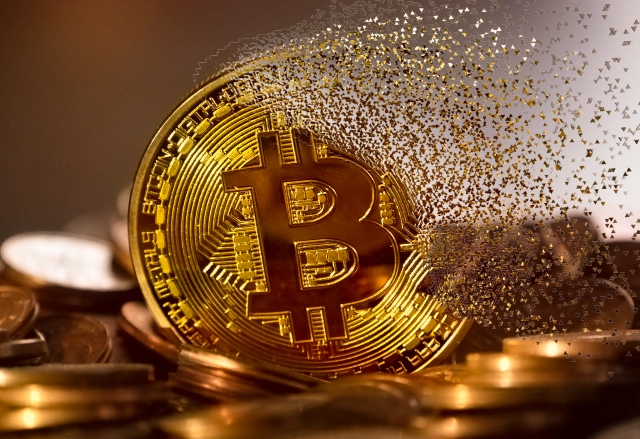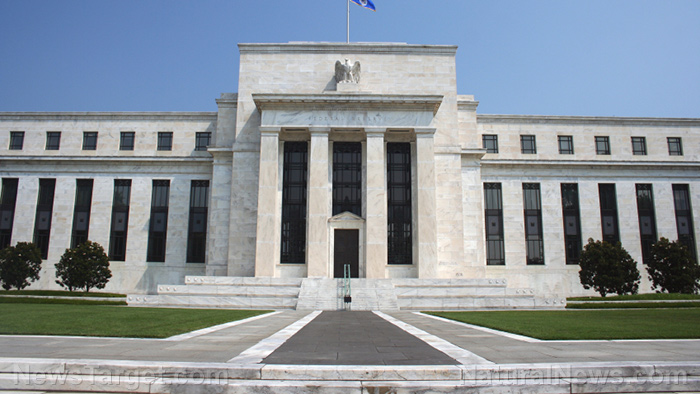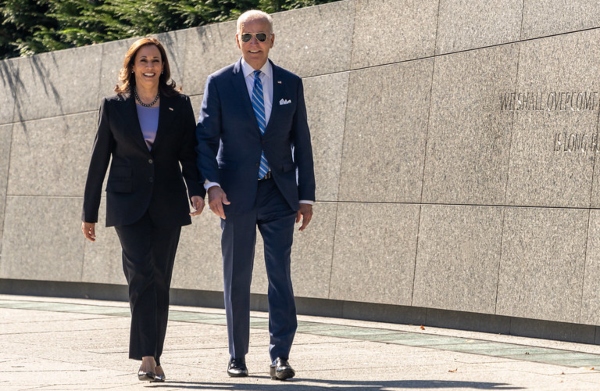Bank collapse contagion? Customers line up to take their money out of First Republic Bank
03/14/2023 / By Arsenio Toledo

Customers of First Republic Bank in Southern California are lining up outside bank branches, eager to withdraw their funds in the wake of the collapse of Silicon Valley Bank (SVB).
SVB’s collapse has raised fears that First Republic could suffer a similar bank run that could lead to its own demise. Analysts have even pointed out the similarities between SVB and First Republic’s estimated value of assets versus actual value. (Related: Silicon Valley Bank has now collapsed, and 95% of deposits were uninsured.)
This fear led to First Republic losing 33 percent of its value during the week SVB collapsed, and another 61.8 percent on Monday, March 13.
First Republic is the 14th largest bank in the United States, with more than $213 billion in reported assets. Like SVB, the bank heavily relies on customer deposits. In SVB’s case, it was technology startups and venture capital investors. In First Republic’s case, it is wealthy individuals, many of whom are now deciding to trust other banks with their savings and assets.
Several branches already reporting bank runs following SVB crash
The bank, founded in San Francisco in 1985, has 80 branches in 11 states nationwide, with most branches concentrated on the West and East coasts. Several bank branches have already reported bank runs caused by dozens of customers lining up early in the morning to withdraw their assets or close their accounts entirely.
The bank runs began on Saturday, March 11, the morning after Silicon Valley Bank collapsed and was seized by federal authorities. At least four First Republic branches have reported bank runs, including two branches in Los Angeles – one on the outskirts of the city and another along San Vicente Boulevard – as well as a branch in San Francisco and in neighboring Brentwood.
First Republic executives spent the entire weekend attempting to reassure their clients that their money is safe. The bank released a statement saying “the additional borrowing capacity from the Federal Reserve, continued access to funding through the Federal Home Loan Bank and ability to access additional financing through JPMorgan Chase and Company increases, diversified and further strengthened First Republic’s existing liquidity profile.”
“First Republic’s capital and liquidity positions are very strong, and its capital remains well above the regulatory threshold for well-capitalized banks,” said founder Jim Herbert and CEO Mike Roffler in a statement.
Other banks experiencing declines in shares following SVB collapse
In light of SVB’s collapse, several other banks have also reported declining bank shares. This includes PacWest Bancorp, whose shares dropped 45 percent, and Western Alliance Bancorp, which lost more than 47 percent of its share value.
They are followed by Zions Bancorporation and KeyCorp, whose shares fell 26 percent and 27 percent, respectively. Other financial firms reporting added pressures following SVB’s collapse include Bank of America, whose value slipped by nearly six percent, and Charles Schwab, which tumbled more than 11 percent.
These banks, along with First Republic, experienced several trading halts throughout the day as shares tumbled quickly. First Republic is currently down 67 percent, with a share costing $28.05. On Friday, March 10, a share was worth around $47.45.
“The real issue for the industry is that there is a crisis of confidence in the stickiness of deposits and when that becomes dislocated, things can move very quickly,” said Christopher McGratty, head of U.S. Bank Research at investment bank KBW.
Citi analyst Keith Horowitz noted that other banks with a high degree of uninsured deposits, like SVB, could be at risk of large withdrawals within the next few weeks.
“We believe regionals with less diversified and large uninsured deposit bases are at risk of deposit flight, but not at the speed of SVB and they should have time to tap wholesale funding markets … and raise cash levels,” wrote Horowitz in a note to clients. “In a fragile environment like we are in, we believe banks should be cautious about the potential negative signaling effect of raising deposit rates to keep deposits.”
Learn more about bank failures, especially Silicon Valley Bank’s sudden demise, at Risk.news.
Watch this clip from “Wake Up America” on Newsmax as host Carl Higbie and guest media strategist Dennis Kneale discuss how Silicon Valley Bank’s sudden collapse is a warning for the state of the American economy.
This is from the News Clips channel on Brighteon.com.
More related stories:
Silicon Valley Bank crisis: The liquidity crunch we predicted has now begun.
Sources include:
Submit a correction >>
Tagged Under:
bank collapse, bank run, banking, banks, Bubble, chaos, Collapse, economic collapse, economics, economy, finance, financial crash, First Republic Bank, market crash, money supply, panic, risk, Silicon Valley Bank
This article may contain statements that reflect the opinion of the author
RECENT NEWS & ARTICLES
COPYRIGHT © 2017 PENSIONS.NEWS
All content posted on this site is protected under Free Speech. Pensions.news is not responsible for content written by contributing authors. The information on this site is provided for educational and entertainment purposes only. It is not intended as a substitute for professional advice of any kind. Pensions.news assumes no responsibility for the use or misuse of this material. All trademarks, registered trademarks and service marks mentioned on this site are the property of their respective owners.



















